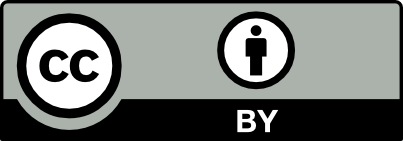Influence of additives on rheological and textural properties of cellulose based fat mimetic
DOI:
https://doi.org/10.14232/analecta.2021.1.53-63Keywords:
microcrystalline cellulose fat mimetic, additives, gel structure, rheology, textureAbstract
Cellulose based fat mimetics play important role in substitution of fat in reduced fat food products. Production of food often includes application of additives. This work examines the influence of additives on the obtaining stable fat mimetic based on fibers of microcrystalline cellulose. Applied additives affect to the durability of food products and increase their shelf life. The influence of added additives was observed trough the rheological and textural properties of MCG fat mimetic, thus its further functional characteristics. Increasing concentration of fibers positively influenced to crosslinking during hydration and increased strength and consistency of obtained gel. But, application of small hydrophilic molecules of additives disturbed rheological and textural properties of fat mimetics. Obtained gels were still with the thixotropic behavior, but with significantly reduced viscoelastic properties, consistency, firmness and cohesiveness. Based on results, in the aim to ensure obtaining of stable, cross–linked gel of fat mimetic with adequate rheological, textural and functional properties, the mixture of additives is added after the hydration of fat mimetic gels, because of competition for polar water molecules between small additives molecules and available hydroxyl groups of cellulose chains.
Downloads
References
Akoh, C.C.: Fat replacer, Food Technology, 52 (3), 47–52, (1998).
Cho, S. S., Prosky, L.: Application of complex carbohydrates to food products fat mimetics, In Complex Carbohydrates in Food (S.S. Cho, L. Prosky i M.L. Dreher, eds.), pp. 411–429, Marcel Dekker, Inc, New York, (1999).
Ognen, C. F., Darie, N., Ognean, M.: Fat Replacers, Journal of Agroalimentary Process and Technologies, 12 (2), 433–442, (2006).
BeMiller, J. N.: Carbohydrate Chemistry for Food Scientists, pp. 222–243, AACC International, (2007).
Humphreys, W. M.: Fiber–Based Fat Mimetics: Microcrystalline Cellulose, In Handbook of Fat Replacers (S. Roller i S. Jones, eds.), Chapter 7A, CRC Press, Boca Raton, New York, (1996).
Gómez, M., Moraleta, A., Oliete B.: Effect of fibre size on the quality of fibre–enriched layer cakes, LWT–Food Science and Technology, 43, 33–38, (2010). https://doi.org/10.1016/j.lwt.2009.06.026
Dreher, M.: Food Sources and Uses of Dietary Fiber, In Complex Carbohydrates in Foods (S.S. Cho, L. Prosky i M.L. Dreher., eds.), pp. 327-371, Marcel Dekker, Inc., New York, (1999).
https://sh.wikipedia.org/wiki/Prehrambeni_aditivi
https://www.tehnologijahrane.com/enciklopedija/aditivi-podjela-vrste
„Sl. glasnik RS”, br. 63/2013; www.tehnologijahrane.com
Mezger, T.: The Rheology Handbook: For users of rotational and oscillation rheometers, Vincentz Verlag, Hannover, (2002).
Evageliou, V., Alevisopoulos, S., Kasapis, S.: Application of stress-controlled analysis to the development of low fat spreads, Journal of Texture Studies, 28, 319–335, (1997). https://doi.org/10.1111/j.1745-4603.1997.tb00120.x
Vithanage, C. R., Grimson, M. J., Smith, B. G., & Wills, P. R. : Creep test observation of viscoelastic failure of edible fats. Journal of Physics: Conference Series, 286, 012008, (2011). https://doi.org/10.1088/1742-6596/286/1/012008
Steffe, F. J. : Rheological methods in food process engineering, 2nd ed. Still Valley, Freeman Press, (1996).
Lazaridou, A., Biliaderis, C. : Gluten–free doughs: rheological properties, testing procedures–methods and potential problems, In E. Gallagher (Ed.), Gluten–Free Food Science and Technology, pp. 52–83. United Kingdom. Blackwell Publishing Ltd, (2009).
TA.HD.: Texture Analyser Product Specification, Stable Micro Systems Ltd., Godalming Surrey, Vienna, (2004).
Segura, J. A., Herrera, M. L., Añón, M.C.: Margarines: a rheological study, Journal of the American Oil Chemists' Society, 72, 375–378, (1995).
Hoefler, C. A.: Hydrocolloids, Eagan Press Handbook Series, Eagan Press, Minnesota, USA. (2004).
Ghannam, M. T., Esmail, M. N.: Rheological properties of carboxymethyl cellulose, Journal of Applied Polymer Science, 64 (2), 289–301, (1997). https://doi.org/10.1002/(SICI)1097-4628(19970411)64:2<289::AID-APP9>3.0.CO;2-N
Tadros, T.: Application of rheology for assessment and prediction of the long–termphysical stability of emulsions, Advances in Colloid and Interface Science, 108–109, 227–258, (2004). https://doi.org/10.1016/j.cis.2003.10.025
Angioloni, A., Collar, C.: Small and large deformation viscoelastic behaviour of selected fibre blends with gelling properties, Food Hydrocolloids, 23, 742–748, (2009). https://doi.org/10.1016/j.foodhyd.2008.04.005
Sánchez-González, I., Rodríguez–Casado, A., Careche, M., Carmona, P.: Raman analysis of surimi gelation by addition of wheat dietary fibre, Food Chemistry, 112, 162–168, (2009). https://doi.org/10.1016/j.foodchem.2008.05.054
Downloads
Published
How to Cite
Issue
Section
License
Copyright (C) 2024 Authors
This work is licensed under a Creative Commons Attribution 4.0 International License.













